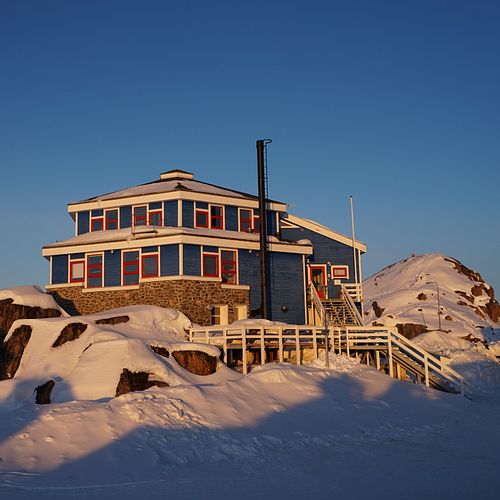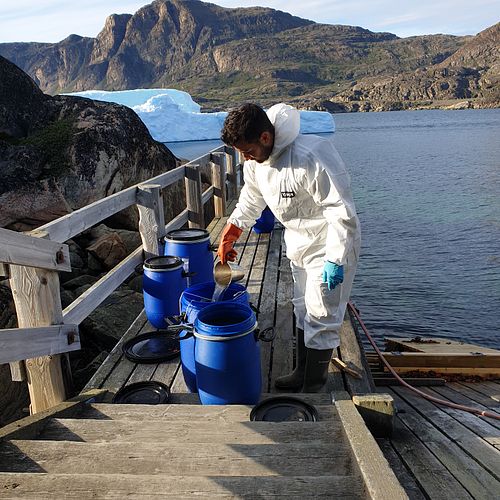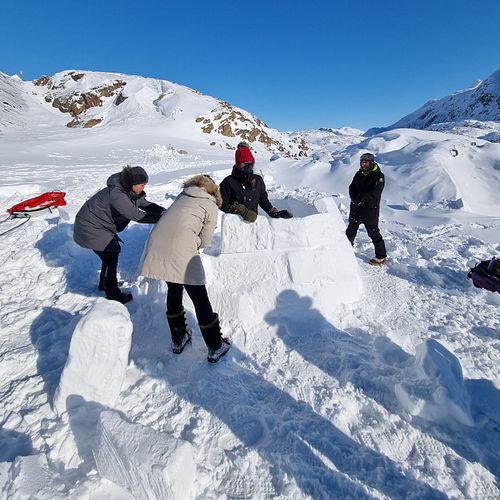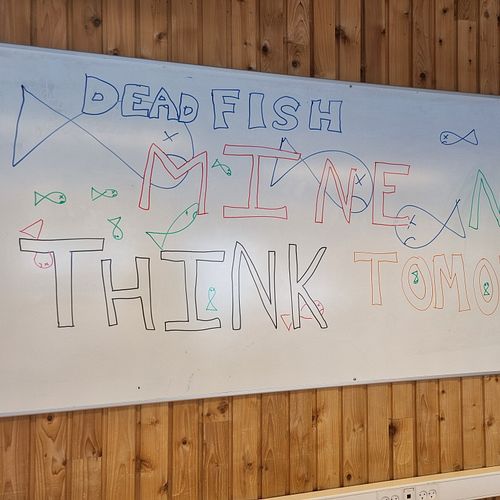9 October 2023 news
By: Kristine B. Pedersen, Akvaplan-niva; Gunvor M. Kirkelund, The Technical University of Denmark; Pernille E. Jensen, The Technical University of Denmark
In Sisimiut, a town of 5,600 people and approximately 1000 sled dogs, located on the western coast of Greenland, 75 km north of the Arctic Circle, sits a campus of the Technical University of Denmark (DTU). The campus hosts an Arctic master in engineering. The courses attract thirty students from around the world every year.
Although the students mainly arrive from Denmark, students from Asia, North America, Europe and even as far as Australia have joined the Arctic semester. The study program consists of intensive engineering courses with a structure much like the one found at the University Studies at Svalbard (UNIS). Each course runs 3-6 weeks, the length depending on ECTS points, and with the possibility of students taking either half or the full semester. The Arctic semester is also part of the Nordic Master in Cold Climate Engineering and the MSc in Arctic Mineral Resources. Both these MSc programs are offered in collaboration between Nordic universities. One of the Arctic semester courses is related to environmental engineering in cold climates with focus on the management of waste, water, wastewater, and contaminated sites in Arctic regions.
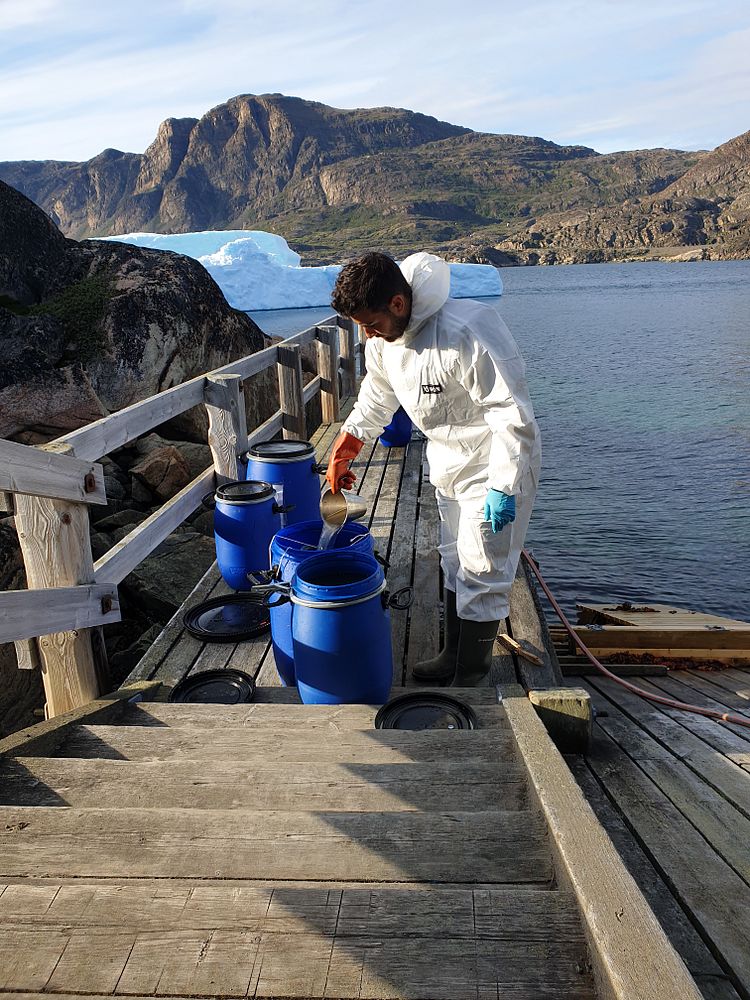
Master student Hadi handling wastewater as part of his master thesis. Photo: Pernille E Jensen
Facing challenges
Sisimiut is the second largest town in Greenland and the primary industry in the town is fisheries. Like other towns in the Arctic, Sisimiut is facing challenges due to climate change and other on environmental challenges related to human activities. One example is sewage which has is directly discharged into the fjords. One of these points of discharge in Sisimiut has in the local tongue been referred to as "the chocolate factory". Finding solutions for the future disposal of waste in remote locations is another issue exemplified in Sisimiut. American and Danish military bases in Greenland are one of the main sources of major pollutions in Greenland. These are examples of some of the case studies that are included in the course. Although many of the case studies are from Greenland, the issues are not isolated to Greenland as they are also experienced in other Arctic countries.

Students constructing an igloo to stay in for the night. Photo: Akvaplan-niva
Key players
Through the Arctic semester students are introduced to key players in local management of water and waste to promote the co-operation with local stakeholders and university campus. Student accommodation is along with Greenlandic students from the BEng students in Arctic Civil Engineering and Fishery Technology, also offered in Sisimiut to further promote interactions between the international and Greenlandic students. The students have a strong interest in climate change and hope to make an impact in the Arctic with their engineering education. Since most of the students arrive from countries with warmer climates, the semester in Sisimiut to be a cool, and cold, experience for them, where they get to practice snow camping, survival course and skiing. Some of the first-time skiers are even brave enough to participate in the Arctic Circle Race, a three-day 160-kilometre cross country skiing event.
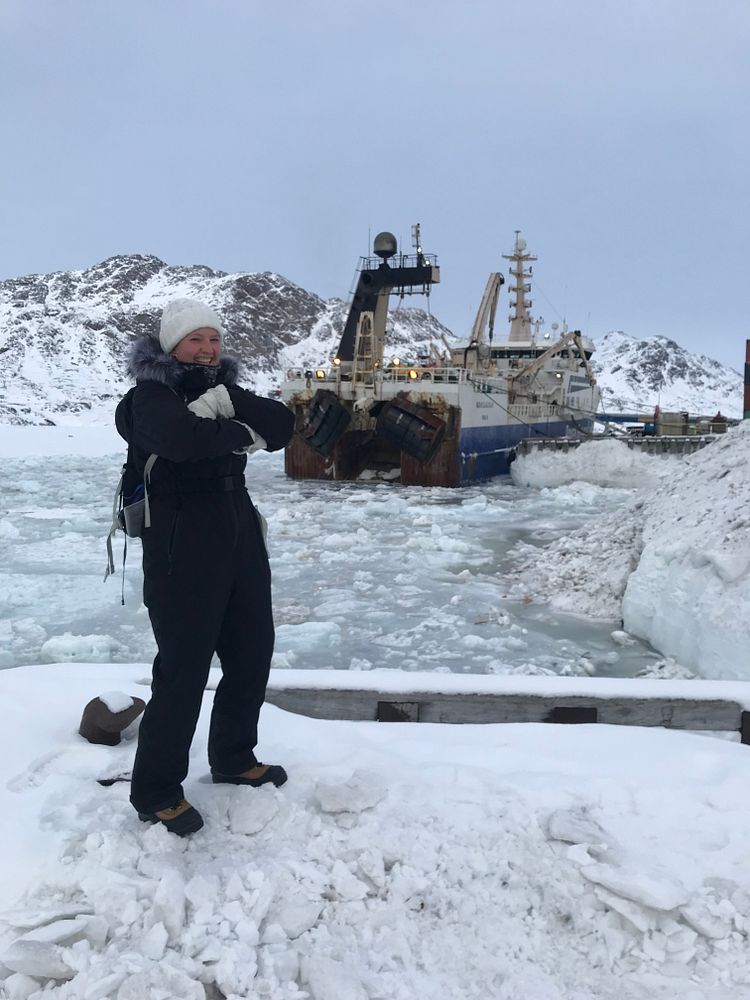
Master student Frederikke Brandt Feldthus enjoying the cool atmosphere and surroundings whilst attempting to find the wastewater outlet. Photo: Naomi Fleurine Sørensen
Some students have continued their studies with environmental issues in the Arctic in their master and PhD theses. For instance, a master thesis in 2019 was related to the environmental site investigations in the now closed mine in Svea, Svalbard, prior to the termination of the mine. This was a consultancy project led and supervised by Akvaplan-niva. The thesis included sampling and analysis of soil from Svea as well as evaluating the potential for phytoremediation of PFAS polluted soil. Currently a MSc thesis is investigating the levels of micro and macro-plastic contamination originating from untreated wastewater in Greenland, and another is mapping and tracking sources of hydrocarbon contamination in drinking water in Greenland. In addition, A PhD thesis on the influence of the water supply systems on public health in Greenland has just been handed in for defence.
The students who have attended the Arctic Semester in Greenland are eager to continue studying and working in Arctic, which opens for more collaboration in the circumpolar area.
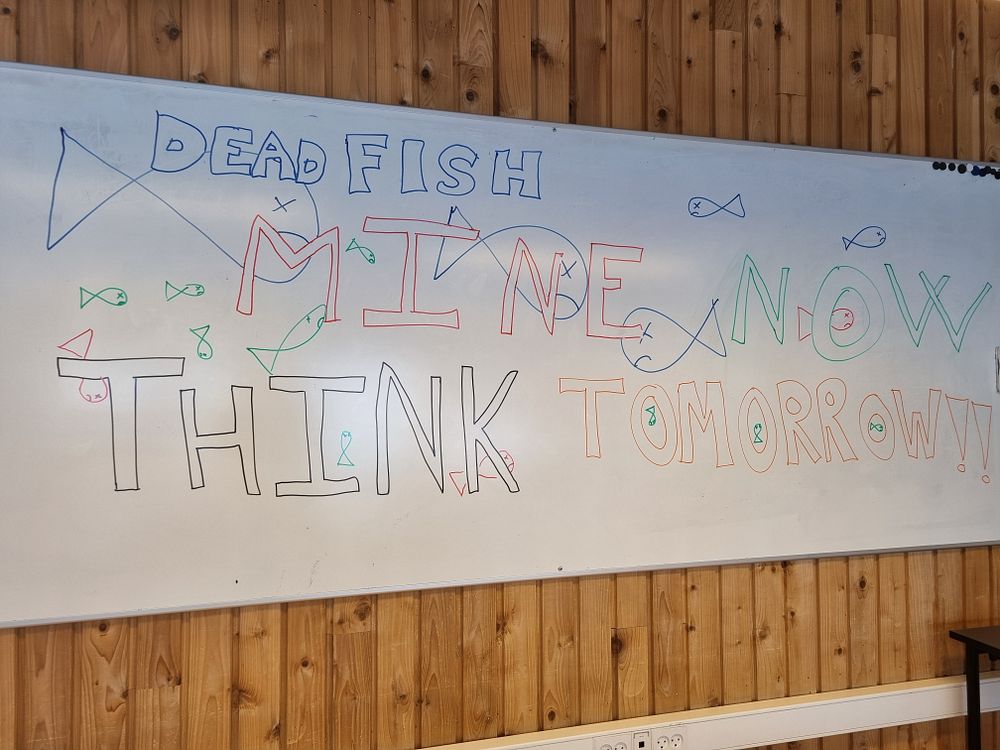
Students are preparing to participate at a hearing on submarine mine tailings disposal. Each student group represents different stakeholders. Photo: Akvaplan-niva
This text has previously been published in Fram Forum: Teaching cold climate engineering in Greenland - Framforum

